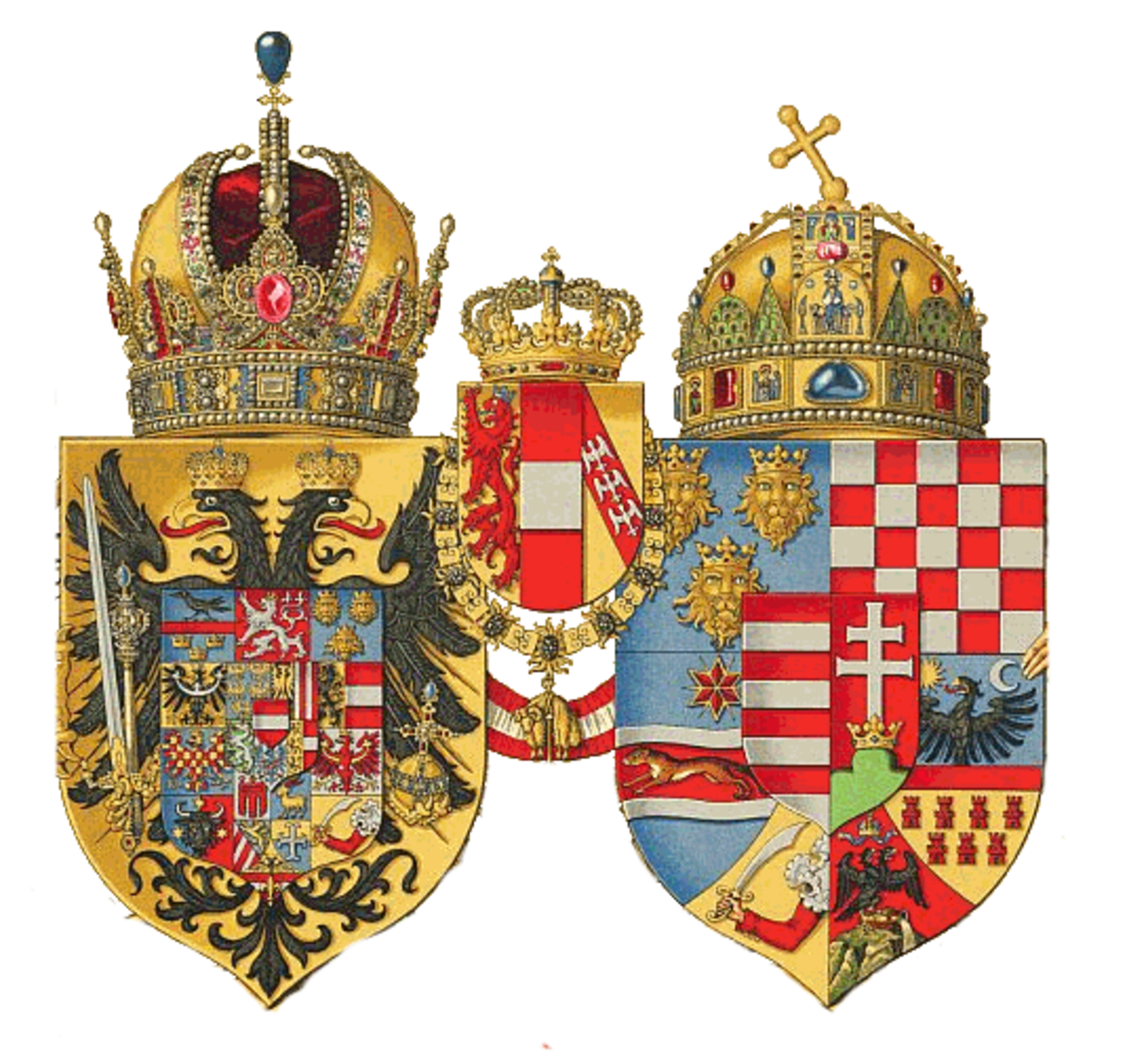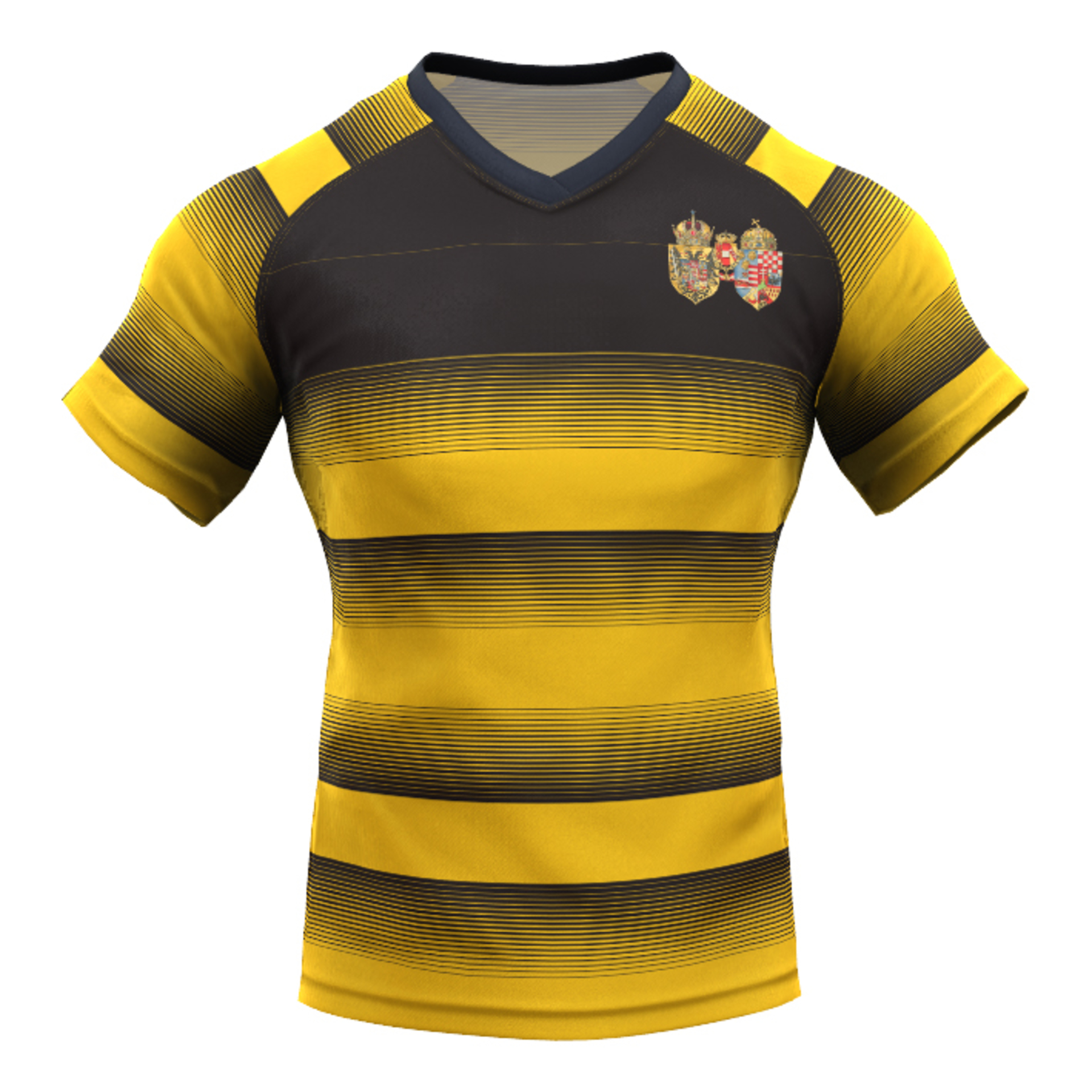Austro-Hungarian Empire
Due to the expulsion of Austria from the German Confederation in 1866, the weakened Vienna was forced to acknowledge Hungary as an equal partner in the country, despite earlier emphasizing that the Hungarians “frittered away” their constitutional rights with the revolution of 1848-49. The Empire was reorganized by having an Austrian and a Hungarian part (1867).

Coat of arms

Shirt
| Position | First name | Last name | Mjesto rođenja | Like | Dislike | |
|---|---|---|---|---|---|---|
| GK | Jan | OBLAK | Škofja Loka |
45 |
7 |
|
| GK | Petr | CECH | Plzeň |
10 |
0 |
|
| DC | Aleksandar | DRAGOVIĆ | Vienna |
7 |
4 |
|
| DC | Martin | ŠKRTEL | Handlová |
32 |
10 |
|
| DC | Milan | ŠKRINIAR | Žiar nad Hronom |
41 |
6 |
|
| DRC | Branislav | IVANOVIĆ | Sremska Mitrovica |
43 |
15 |
|
| DLC | Tamas | KADAR | Veszprem |
10 |
5 |
|
| DRLC | Domagoj | VIDA | Našice |
34 |
6 |
|
| DRL | Šime | VRSALJKO | Rijeka |
54 |
7 |
|
| DR | Lukasz | PISZCZEK | Goczałkowice-Zdrój |
14 |
3 |
|
| DR/MR | Darijo | SRNA | Metković |
13 |
10 |
|
| DL | Christian | FUCHS | Neunkirchen |
9 |
5 |
|
| DL/MLC | David | ALABA | Vienna |
28 |
3 |
|
| DMC | Milan | BADELJ | Zagreb |
45 |
6 |
|
| MC | Luka | MODRIĆ | Zadar |
90 |
8 |
|
| MC | Mateo | KOVAČIĆ | Linz |
20 |
0 |
|
| MRLC | Marcelo | BROZOVIĆ | Zagreb |
45 |
5 |
|
| AMC/SS | Marek | HAMŠIK | Banská Bystrica |
39 |
5 |
|
| AMRLC | Bartosz | KAPUSTKA | Tarnów |
4 |
2 |
|
| AMRLC | Dušan | TADIĆ | Bačka Topola |
21 |
9 |
|
| AMRLC | Nicolae | STANCIU | Alba Iulia |
10 |
11 |
|
| AMRL | Ivan | PERIŠIĆ | Split |
80 |
5 |
|
| AMRL | Laszlo | KLEINHEISLER | Kazincbarcika |
2 |
1 |
|
| AMRL | Marcel | SABITZER | Graz |
0 |
1 |
|
| AMRL | Nikola | VLAŠIĆ | Split |
41 |
3 |
|
| FRLC | Ante | REBIĆ | Split |
41 |
1 |
|
| FRLC | Mario | MANDŽUKIĆ | Slavonski Brod |
50 |
1 |
|
| FRLC | Marko | ARNAUTOVIĆ | Wien |
8 |
3 |
|
| FC | Andrea | PETAGNA | Trieste |
1 |
4 |
|
| FC | Nikola | KALINIĆ | Split |
48 |
11 |
|
| FC | Patrik | SCHICK | Prague |
6 |
4 |
|
| FC/SS | Andrej | KRAMARIĆ | Zagreb |
44 |
3 |
(Today: Austria, Hungary, Slovakia, Croatia, part of Serbia, part of Romania, Trieste, part of Poland, Slovenia, Czech Republic)
Apart from having a common ruler in the Habsburg emperor, a position held by Franz Joseph (ruled 1848 – 1916), common affairs of Austria and Hungary were foreign affairs, the military, and finances. Looking to the French as a role model, the Hungarian elite wanted to create a national state from the lands of the crown of Saint Stephen, with only one “political nation” – the Hungarian nation. However, unlike France, Hungary was not a sovereign state, potential “political Hungarians” had languages vastly different from Hungarian, and nationalist movements of their own were well under way in all of them (Croats, Slovaks, Romanians, Serbs, Rusyns). In fact, Hungarian nationalism was the main drive for them.
The Habsburgs, unlike monarchs who acknowledged a certain national identification, did not impose Austrian nationalism. They did not want the Empire to have one large nation that could maybe topple the emperor, like in France. Even when one gets the impression that they encouraged the policy of Germanization, their steps were guided by wishes for a singular universal Empire. Since they couldn’t stop the creation of national movements in the second half of the 19th century, Vienna allowed cultural nationalism, i.e. the building of national identity through literature, poetry, visual arts, education, writing of national history, sports societies (Sokol), etc.
Sources
- Benedict ANDERSON, Nacija: zamišljena zajednica : razmatranja o porijeklu i širenju nacionalizma, Zagreb 1990.
- Duško BILANDŽIĆ, Hrvatska moderna povijest, Zagreb, 1999.
- Petr ČORNEJ, Ivana ČORNEJOVA, Ivan RADA, Vratislav VRANIČEK,''Povijest Češke : od seobe Slavena do suvremenog doba'', Zagreb, 2014.
- Snježana KORDIĆ, Jezik i nacionalizam, Zagreb 2010.
- Dinko ŠOKČEVIĆ, Hrvati u očima Mađara, Mađari u očima Hrvata , Zagreb, 2006.
- Alan John Percivale TAYLOR, Habsburška monarhija: 1809-1918., Zagreb, 1990.
- Coat of arms: https://en.wikipedia.org/wiki/House_of_Habsburg
